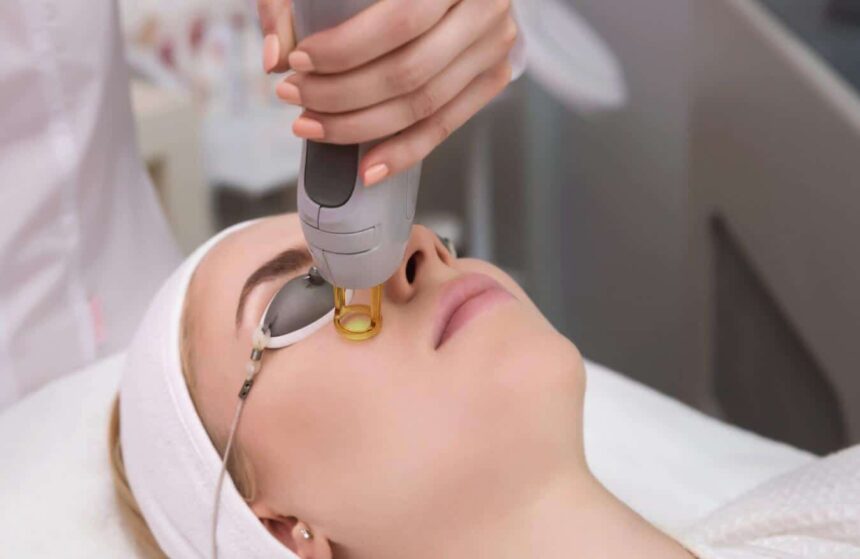Laser and light-based therapies have transformed medical treatments in recent years. They offer precision, minimal invasiveness, and faster recovery times. These technologies, from skincare to surgery, redefine how we approach various health concerns. This article delves into how these therapies are changing the landscape of medical treatments.
Laser Therapy in Dermatology: Targeting Skin Concerns
One of the most common uses of laser therapy is in dermatology. These treatments are known for their precision and effectiveness.
- Laser Resurfacing: Laser resurfacing involves removing the outer layer of skin to reduce wrinkles, scars, and sun damage. It stimulates collagen production, resulting in smoother, younger-looking skin.
- Acne and Scar Treatment: Lasers target the deeper layers of skin, reducing acne and minimizing the appearance of scars. This method offers a non-invasive option for patients looking for significant improvements.
- Hair Removal: Laser hair removal targets hair follicles to reduce unwanted hair growth. It provides a long-lasting solution compared to traditional hair removal methods like shaving or waxing.
Light-Based Therapies: Harnessing Different Wavelengths
Light-based therapies use different wavelengths of light to treat various skin conditions. These treatments are non-invasive and have minimal downtime.
- LED Light Therapy: LED therapy uses different colours of light to address skin concerns. Red light promotes collagen production, reducing wrinkles and fine lines. Blue light targets acne-causing bacteria, helping to clear up the skin.
- Photodynamic Therapy (PDT): PDT combines a light-sensitive drug with a specific light wavelength to target abnormal cells. It treats conditions like actinic keratosis, a precancerous skin lesion, and certain types of skin cancer.
Laser Surgery: Precision and Minimal Invasiveness
Laser technology has significantly advanced surgical procedures, offering precision and reducing the need for traditional surgery.
- Laser Eye Surgery: Procedures like LASIK use lasers to reshape the cornea, correcting vision issues like myopia, hyperopia, and astigmatism. It offers a quick recovery time and long-lasting results.
- Laser Lithotripsy: This procedure uses lasers to break down kidney stones into smaller pieces that can be easily passed. It is less invasive than traditional surgery, reducing recovery time and discomfort.
- Laser-Assisted Tumor Removal: Lasers target and destroy tumours with minimal damage to surrounding tissues. This method is particularly useful for tumours in delicate areas difficult to reach with conventional surgery.
Tattoo Removal: Advanced Techniques for Better Results
Tattoo removal has evolved significantly with laser technology, offering more effective and less painful treatments.
- Laser Tattoo Removal: This method uses high-intensity light beams to break down the ink particles in tattoos. The body’s immune system gradually removes these particles, fading the tattoo over time.
If you search for Sydney tattoo removal, you may find clinics specializing in tattoo removal that use advanced laser techniques to provide more effective treatments. These lasers can precisely target different ink colours and skin types, reducing the risk of scarring and requiring fewer sessions.
Pain Management and Rehabilitation: Enhancing Recovery
Laser and light-based therapies are also being used in pain management and rehabilitation.
- Low-Level Laser Therapy (LLLT): LLLT, or cold laser therapy, uses low-intensity lasers to stimulate cell function and promote healing. It reduces pain and inflammation in arthritis, tendinitis, and muscle strains.
- Infrared Therapy: Infrared light penetrates deep into tissues, improving circulation and reducing pain. Physical therapy commonly uses it to enhance muscle recovery and relieve chronic pain.
Laser Therapy in Dentistry: Improving Oral Health
Laser technology is making dental procedures more efficient and less painful.
- Laser Gum Surgery: Lasers remove infected tissue and promote the reattachment of healthy gum tissue to the teeth. This method is less invasive than traditional gum surgery and has a quicker recovery time.
- Cavity Detection and Treatment: Lasers can detect cavities early and remove decayed tissue precisely. This approach preserves more of the healthy tooth structure compared to traditional drilling.
Laser and Light Therapies in Oncology: Targeting Cancer Cells
Advancements in laser and light therapies have also been beneficial in cancer treatment.
- Laser-Induced Interstitial Thermotherapy (LITT): LITT uses lasers to heat and destroy cancer cells, particularly in tumours that are difficult to reach with traditional surgery. It’s often used for brain tumours and liver metastases.
- Photodynamic Therapy for Cancer: PDT is used to treat certain types of cancer, including oesophagal and non-small cell lung cancer. The therapy targets cancer cells with minimal damage to surrounding healthy tissue.
Conclusion
Laser and light-based therapies revolutionize medical treatments, offering precise, non-invasive options for various health concerns. From dermatology to oncology, these technologies provide effective solutions with minimal downtime. As advancements continue, the potential for laser and light-based therapies in medicine is bound to grow, promising better outcomes for patients.






